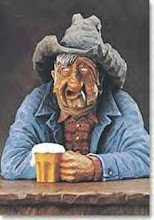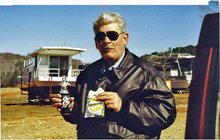During the desperate battle of Point Pleasant, Virginia on October 10, 1774, during what some historians agree was the first battle of the American Revolution, when settlers and soldiers were surrounded in their fort by Shawnee Indians led by Chief Cornstalk, the settlers learned of the Indian plans to also attack Fort Donnelly and the nearby settlements of Greenbrier. The settlements had to be warned to prevent a massacre. During the War some Indians became allies of the settlers and believed it to be to their advantage to support who they considered to be the winning side. For whatever reason, inside the fort at Point Pleasant was another sub-sect Indian chief -- the Grenadier Squaw as she was called by the English because of her size. She was over 6'5" tall and an imposing figure. Although a sister to Chief Cornstalk, she fought on the side of the settlers. Several scouts were sent out to escape and warn the settlements in Greenbrier of the impending attacks, but none were able to get through. It was decided to send two more volunteer scouts and hope that one would get through. The two selected were dressed and painted as Indians by Nonhelema, the Grenadier Squaw. Philip Hamman and John Pryor volunteered to go. Philip was twenty-four years old and originally from the Upper Rhineland area of Germany called The Palatinate and had just arrived in Philadelphia two years before.
After a run of over one hundred sixty miles in just two days, Philip reached the settlement twelve hours before the Indians and warned of the impending attacks. John Pryor never made it. For this heroic feat, he was dubbed "The Savior of Greenbrier" There is a highway historical marker on Route 60 near Greenbrier today relating his exploits. After the war, he returned to Greenbrier and married Christina Cook. (For more about this American hero, read a book titled "The Warrior Woman" by James Alexander Thom and his wife.) A couple of years later, in 1782, they traversed the Wilderness Road into Kentucky and settled in what is now Montgomery County. It was a large extended family that travelled the Wilderness Road. that fall. In addition to the Hammans, there were a large party of Baughmans who were the family of Christina's mother. They were happy and excited about moving to the new land. As the wagon train lumbered happily along near Hazel Patch, on October 17,1782, the Indians struck and very quickly killed most of the Baughmans and scattered the remainder of the party. Days later, Christina Cook Hamman, after wandering in the wilderness, staggered into a nearby store with an arrow in her head and their week old baby dead in her arms. The massacre has forever after been called "Baughman's Defeat."
Over the next forty years, they raised a large family near Mt. Sterling. By 1826, they had moved again to Jackson County, Alabama on a 2000 acre farm shortly after the Cherokees had been forcibly removed to Oklahoma. In 1827, Philip was ordained a pastor in the Friendship Baptist Church near Fackler. He died August 3, 1832 and Christina died January 28, 1842. They were buried on their farm side by side. After many years of neglect, their graves were in danger of being lost so a family association of their descendants moved their graves to a cemetery at Valley Head, Alabama, near Hammondville.
Over the next forty years, they raised a large family near Mt. Sterling. By 1826, they had moved again to Jackson County, Alabama on a 2000 acre farm shortly after the Cherokees had been forcibly removed to Oklahoma. In 1827, Philip was ordained a pastor in the Friendship Baptist Church near Fackler. He died August 3, 1832 and Christina died January 28, 1842. They were buried on their farm side by side. After many years of neglect, their graves were in danger of being lost so a family association of their descendants moved their graves to a cemetery at Valley Head, Alabama, near Hammondville.
Christina and Philip were the parents of:
Mary "Polly" Hamman, who was the mother of:
William Jackson Cope, who was the father of:
Armina Cope, who was the mother of:
Laura Back, who was the mother of:
Ollie James Landrum, who was the father of James Alan Landrum. Thus Philip and Christina were my 4th great-grandparents! I have known this for thirty years or so but had no idea where Valley Head or Fackler Alabama were.
On Monday, 11/17/08, Anne and I decided to explore nearby Lookout Mountain a little more than what we had already seen. In looking at the map, I noticed it ran south pretty much parallel to I-59 in Alabama and I also saw a little place named Valley Head! And it was only 69 miles away -- sounds like a great little roadtrip! By the time we got to Valley Head, we were both hungry and looking for a place to eat. There was one. A modest but very friendly place -- we were the only customers. I asked if anyone knew of any Hammans in the neighborhood. Over the years, the family name Hamman has been spelled many different ways. They said yes, there were many Hammonds around Valley Head. She had no idea nor had ever heard a story about Philip Hamman which I was happy to relate! The lady said there were several cemeteries around and gave us vague directions to every one of them! We looked around town a little and decided to go back home via Lookout Mountain. BUT, as fate would have it, we said let's look at the one large cemetery we passed on the way into town. I made a loop and on the way out, Anne spotted a new stone with the name Hammond. We walked over and practically stumbled upon the nearby gravestones of Philip and Christina! What a wonderful surprise! So we drove around a little more trying to get a feel for the place where they lived and died. We did return home via Lookout Mountain and Mentone, but that's another story! (Hint: if you ever get close to Mentone, take a peek!) Along the way we saw DeSoto Falls which was the site of the first hydroelectric power plant in northern Alabama. A truly interesting place.
Any descendant of Philip Haman is elgible to join the DAR or SAR.
If you would like to see a couple of pics of our trip, just follow the link at the bottom of this page.


No comments:
Post a Comment